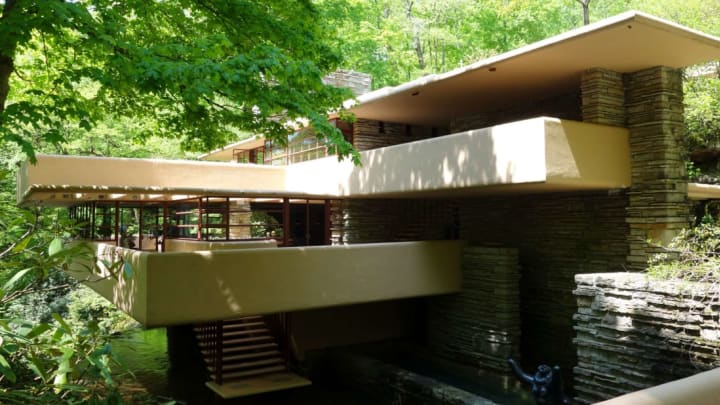If you only know one architect by name, there’s a pretty good chance it’s Frank Lloyd Wright. The 20th-century visionary, whose most famous works include Fallingwater in Pennsylvania and New York’s Guggenheim Museum, ushered American architecture into a modern era that prized simplicity and natural beauty over Victorian ostentation.
Since most of his buildings are closed to visitors right now, the Frank Lloyd Wright Building Conservancy, the Frank Lloyd Wright Foundation, and Unity Temple Restoration Foundation are working together to bring the buildings to visitors via virtual tours.
Smithsonian reports that every Thursday at 1 p.m. EST, participating sites will share a new video of a Wright-constructed property across various social media accounts with the hashtag “#WrightVirtualVisits.” Last week, for example, Minneapolis’s Malcolm Willey House shared a video on its Facebook page of the Seth Peterson Cottage in Mirror Lake, Wisconsin. This way, fans who follow a certain building on social media will get to learn about others.
The video tours, hosted by the property owners or directors of Wright-affiliated organizations, cover everything from specific architectural elements, like sloping ceilings and built-in seating, to general themes in Wright’s work, like his commitment to accentuating features of the natural landscape. Some even touch on the process of adding modern technology to the houses; the Willey House, which was built in 1934, was outfitted with air conditioning during the early 21st century (though modern trappings don't necessarily make the houses any easier to sell).
In short, the videos are a great way for newcomers to be introduced to Wright’s legacy and for longtime fans to pick up behind-the-scenes details about his buildings. So far, 17 properties have volunteered to take part in the initiative, including Wright’s own Wisconsin estate, Taliesin, and Fallingwater, a summer residence for department store owner Edgar J. Kaufmann that Wright built on top of a waterfall in the mid-1930s.
You can discover the videos by searching for #WrightVirtualVisits on Facebook, Twitter, and Instagram, or you can bookmark this page from the Frank Lloyd Wright Building Conservancy’s website, which will be updated with new videos as they’re made public.
[h/t Smithsonian]
